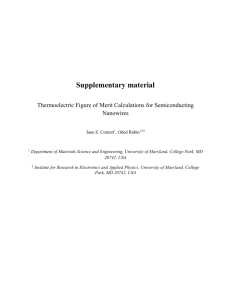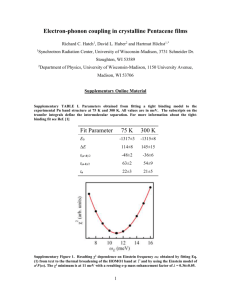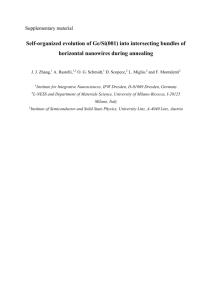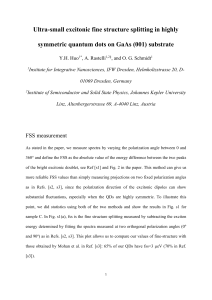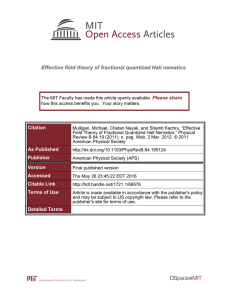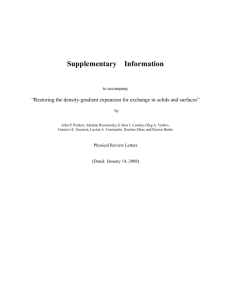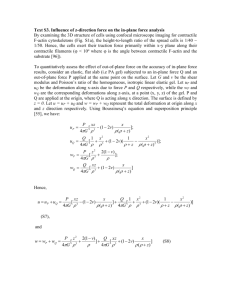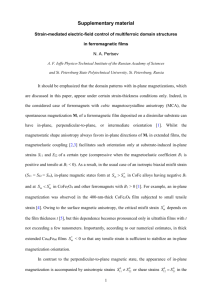Influence of electric field on anisotropic exchange splitting in
advertisement
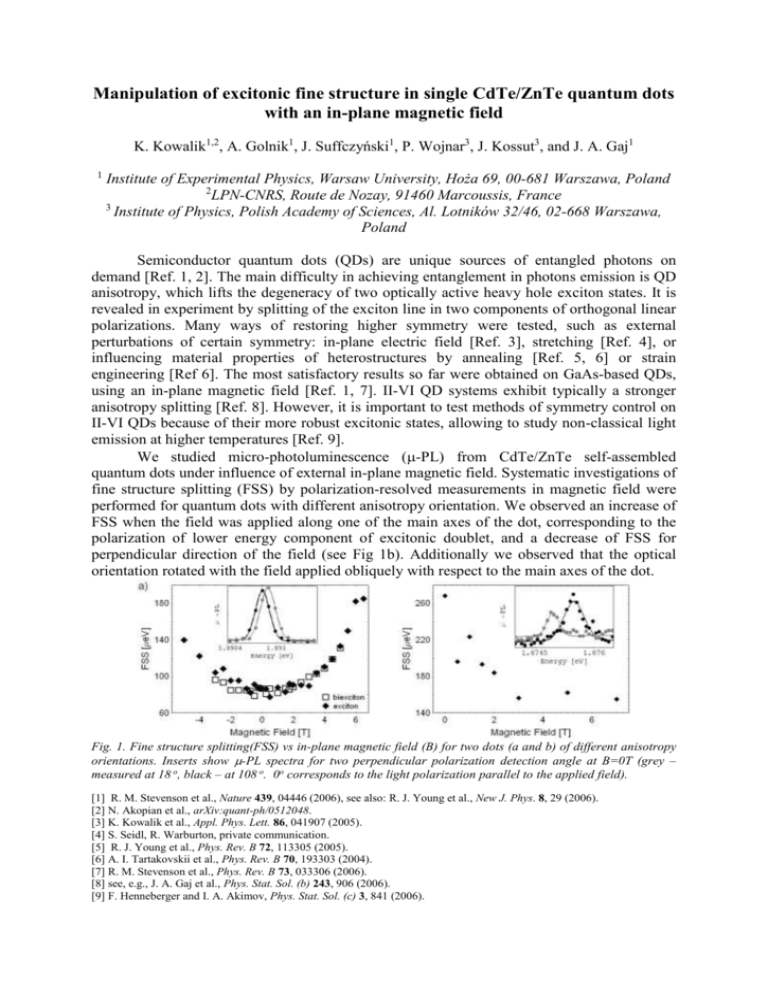
Manipulation of excitonic fine structure in single CdTe/ZnTe quantum dots with an in-plane magnetic field K. Kowalik1,2, A. Golnik1, J. Suffczyński1, P. Wojnar3, J. Kossut3, and J. A. Gaj1 1 Institute of Experimental Physics, Warsaw University, Hoża 69, 00-681 Warszawa, Poland 2 LPN-CNRS, Route de Nozay, 91460 Marcoussis, France 3 Institute of Physics, Polish Academy of Sciences, Al. Lotników 32/46, 02-668 Warszawa, Poland Semiconductor quantum dots (QDs) are unique sources of entangled photons on demand [Ref. 1, 2]. The main difficulty in achieving entanglement in photons emission is QD anisotropy, which lifts the degeneracy of two optically active heavy hole exciton states. It is revealed in experiment by splitting of the exciton line in two components of orthogonal linear polarizations. Many ways of restoring higher symmetry were tested, such as external perturbations of certain symmetry: in-plane electric field [Ref. 3], stretching [Ref. 4], or influencing material properties of heterostructures by annealing [Ref. 5, 6] or strain engineering [Ref 6]. The most satisfactory results so far were obtained on GaAs-based QDs, using an in-plane magnetic field [Ref. 1, 7]. II-VI QD systems exhibit typically a stronger anisotropy splitting [Ref. 8]. However, it is important to test methods of symmetry control on II-VI QDs because of their more robust excitonic states, allowing to study non-classical light emission at higher temperatures [Ref. 9]. We studied micro-photoluminescence (-PL) from CdTe/ZnTe self-assembled quantum dots under influence of external in-plane magnetic field. Systematic investigations of fine structure splitting (FSS) by polarization-resolved measurements in magnetic field were performed for quantum dots with different anisotropy orientation. We observed an increase of FSS when the field was applied along one of the main axes of the dot, corresponding to the polarization of lower energy component of excitonic doublet, and a decrease of FSS for perpendicular direction of the field (see Fig 1b). Additionally we observed that the optical orientation rotated with the field applied obliquely with respect to the main axes of the dot. Fig. 1. Fine structure splitting(FSS) vs in-plane magnetic field (B) for two dots (a and b) of different anisotropy orientations. Inserts show -PL spectra for two perpendicular polarization detection angle at B=0T (grey – measured at 18 o, black – at 108 o. 0o corresponds to the light polarization parallel to the applied field). [1] R. M. Stevenson et al., Nature 439, 04446 (2006), see also: R. J. Young et al., New J. Phys. 8, 29 (2006). [2] N. Akopian et al., arXiv:quant-ph/0512048. [3] K. Kowalik et al., Appl. Phys. Lett. 86, 041907 (2005). [4] S. Seidl, R. Warburton, private communication. [5] R. J. Young et al., Phys. Rev. B 72, 113305 (2005). [6] A. I. Tartakovskii et al., Phys. Rev. B 70, 193303 (2004). [7] R. M. Stevenson et al., Phys. Rev. B 73, 033306 (2006). [8] see, e.g., J. A. Gaj et al., Phys. Stat. Sol. (b) 243, 906 (2006). [9] F. Henneberger and I. A. Akimov, Phys. Stat. Sol. (c) 3, 841 (2006).
